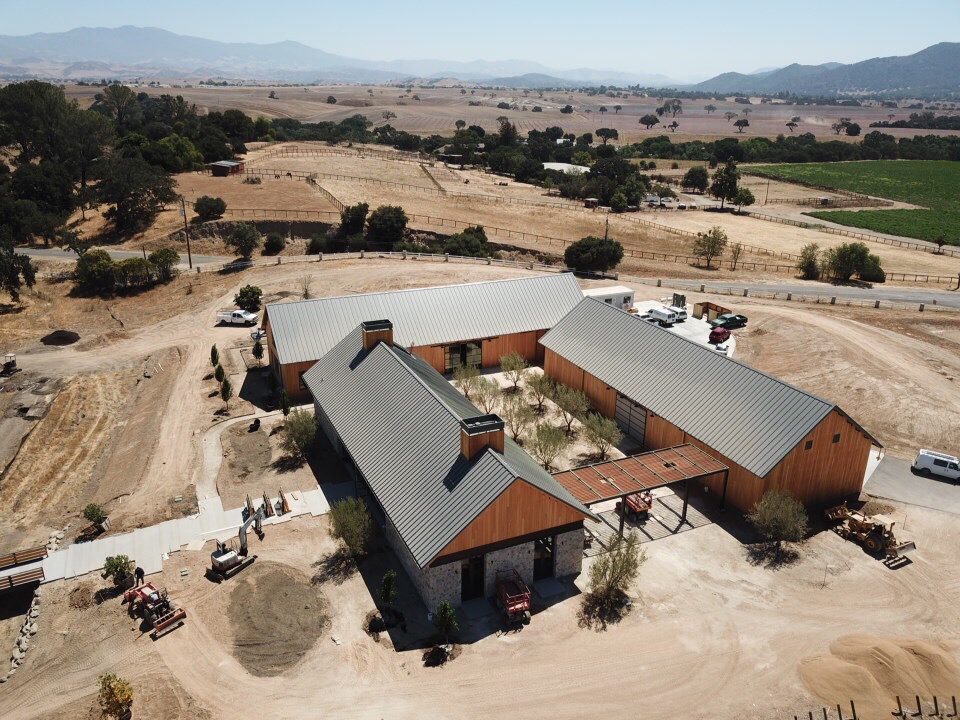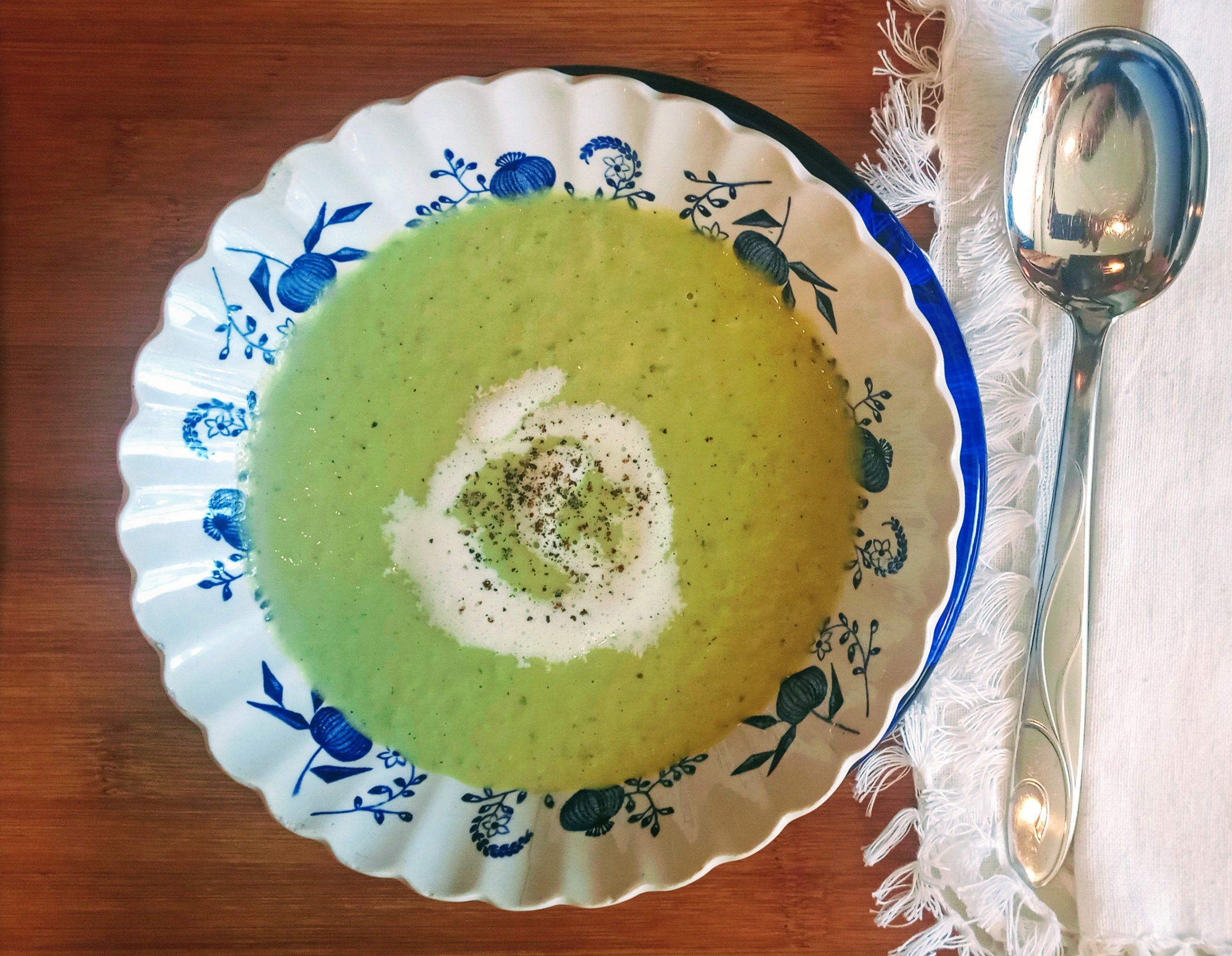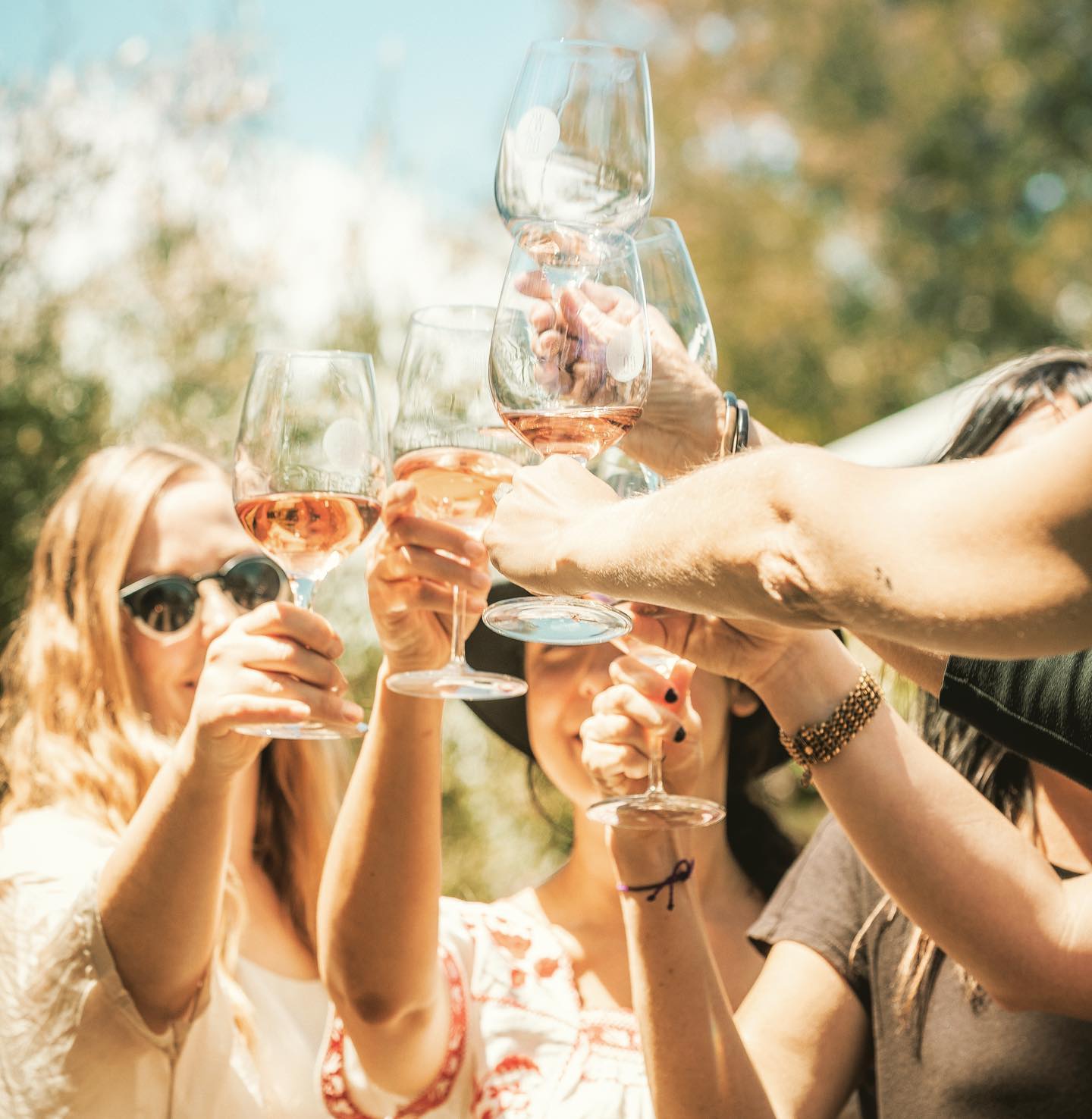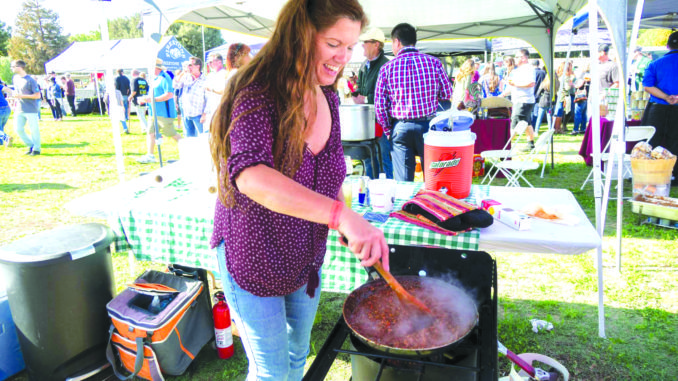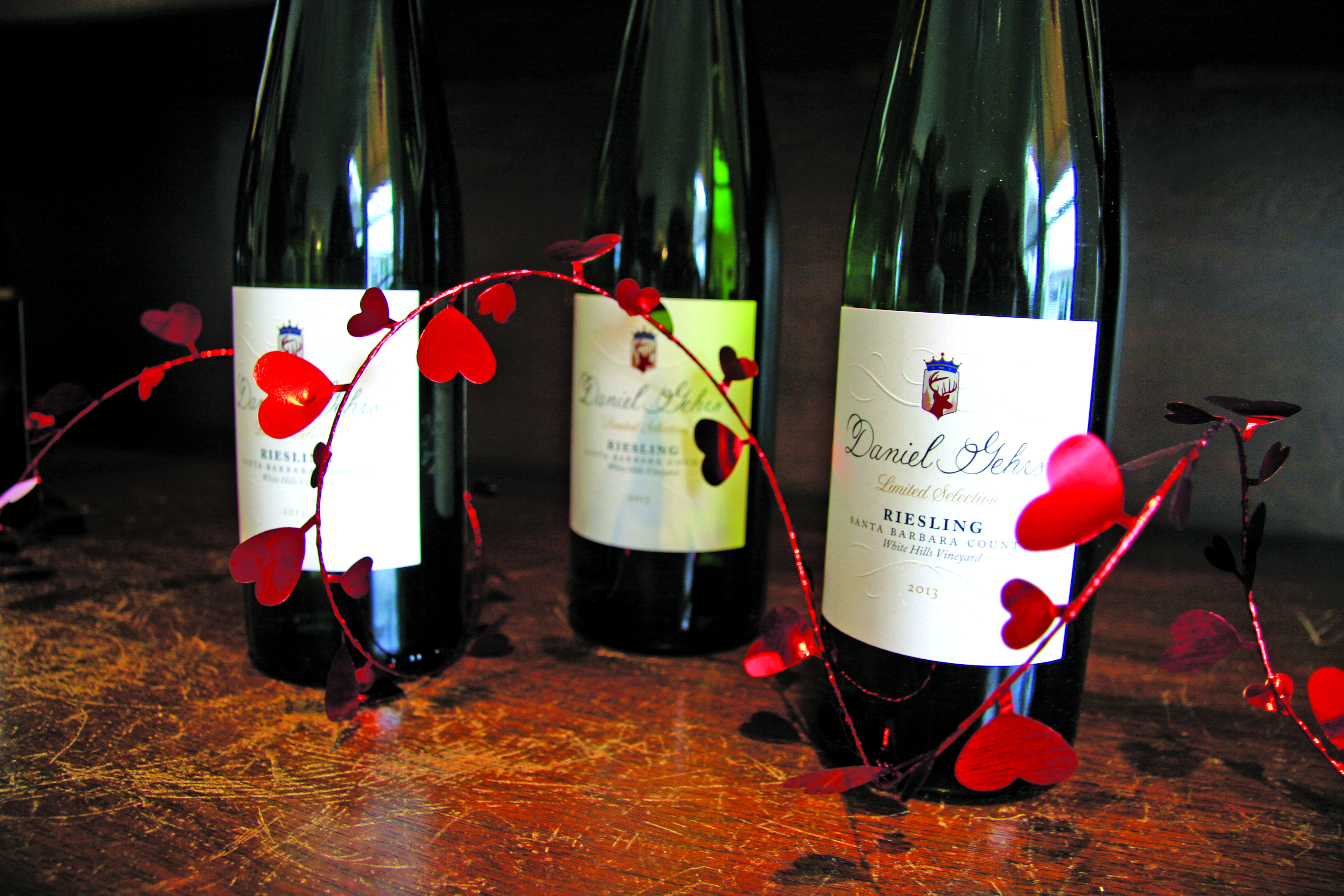By Laurie Jervis
Noozhawk Contributing Writer
With a team composed of a veteran consultant Forbes Magazine calls “The Steve Jobs of Wine,” a regional viticulture expert known as “the grape whisperer” and a longtime Central Coast winemaker and former sommelier at the helm, Brave & Maiden Estate in Santa Ynez will open a by-appointment tasting facility early in September.
The 60-acre estate on Refugio Road south of Highway 246 is home to 46 vineyard acres; and now, a winery and tasting facility.
The Djangs alternate between Los Angeles, where he works as a content strategist and documentary filmmaker, and the Santa Ynez Valley. The former White House videographer for the Obama administration met his wife when both lived in New York City.
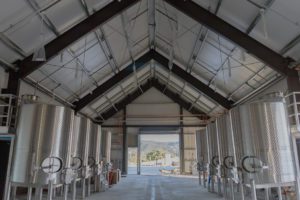
New stainless-steel fermentation tanks line the walls of the new winery facility in Santa Ynez.
Djang oversees the operations with some of the most sought-after names in California’s wine industry, among them consulting winemaker Paul Hobbs of Sonoma and Napa counties, and Ruben Solórzano, longtime vineyard manager and co-owner of Buellton’s Coastal Vineyard Care Associates.
Winemaker Josh Klapper, former award-winning sommelier who garnered a 2004 Wine Spectator Grand Award for the wine list at Sona in Los Angeles, worked with Santa Barbara County winemaking pioneers Jim Clendenen and Bob Lindquist before founding La Fenetre here in 2005.
Starting with the 2012 vintage, Klapper and co-owner Alex Katz rebranded their label Timbre Winery and focused their efforts on pinot noirs, chardonnay and hard cider.
Both Klapper and John Kochis, marketing and sales director, have been at Brave & Maiden since 2014, and it was then that Kochis reached out to Hobbs for his input.
The first vines at Brave & Maiden were planted in 1998; additional acreage was added in 2011, Solórzano said.
While Brave & Maiden is not Hobbs’ first foray into Santa Barbara County viticulture, it’s the first time “that I’ve consulted for such committed people” who are passionate about the craft, he noted.
While summer temperatures in the Santa Ynez Valley are plenty hot, this Refugio Road vineyard and the nearby Happy Canyon AVA differ overnight: “Here, it’s temperate at night, especially since we’re on a little mesa and near the river,” Solórzano explained.
Early in June, we walked among the 2011 vine rows with Solórzano, Hobbs and Klapper, first observing the cabernet sauvignon and then petite verdot, two grape varietals blooming where they were planted. The team outlined their plans for single varietal bottlings and red blends.
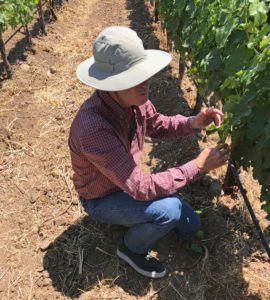
Laurie Jervis / Noozhawk photo
Veteran winemaker and consultant Paul Hobbs of Sonoma and Napa counties has worked with Brave & Maiden as consulting winemaker for several years.
The cabernet sauvignon rows showed strong vigor; “a lot of canopy growth is the goal here,” Hobbs said.
Throughout the growth year, a practice of judicious shoot thinning has resulted in ample afternoon shade and lessened any risk from grape heat stress, producing wines with creamier tannins, he added.
A couple of rows west, gangly shoots on the petite verdot vines displayed tendrils that reached skyward.
“Long tendrils are key to this variety,” Hobbs said. The grape packs a hearty spiciness that is vital to an estate blend, and is “all up front” on the palate, even when it’s just 1 to 2 percent of a blend, he explained.
Also on the estate, in lower sections that surround the new winery, are Sauvignon Blanc, Merlot, Cabernet Franc, Syrah and Grenache.
The sauvignon blanc grows on the north side of the drive that winds up to the house. We tasted the 2017, which balanced peach with a soft, light acidity.
Just outside the soon-to-open, spacious tasting room is a new plot, one that Klapper and Solórzano planted as an experiment and without Hobbs’ knowledge.
“We like to think of it as a demonstration vineyard,” said Solórzano, smiling. It’s less than one acre and is planted to own-rooted cabernet sauvignon, clone 337.
When the facility opens to the public in early September, tastings will be by appointment only, said Estate Director Lesley Ann Couture. She and Kochis emphasized that the decision toward appointment-only tastings was made in-house and not dictated by county government.
“It was our choice, and perhaps by-appointment tastings will be the future of Santa Barbara County. (The method) is more of an elite style,” Kochis said, comparing the trend to that at some of Paso Robles’ more successful wineries. “We want to deliver more of an experience … and to set a new standard for Santa Barbara County.”
Brave & Maiden will offer three tasting levels: An estate tasting flight (wines only); a tour of the winery and vineyard plus the wine flight; and a seated tasting that will include tours and a lunch, either outside or in the adjacent barrel room, Couture said.
The estate also plans to host barrel room dinners, and off-site winemaker dinners in Los Angeles, San Diego and Orange County, she added.
Starting with the first estate vintages, which were produced at Central Coast Wine Services in Santa Maria, Brave & Maiden wines were sold wholesale to restaurants and hotels and made a name for themselves, Hobbs said.
The goal for total annual case production for direct to consumer (new, onsite) sales will be 5,000; current production to date (wholesale) has been approximately 3,000 cases, Klapper said.
We tasted through the current vintages of reds, including cabernet franc, merlot, syrah and cabernet sauvignon.
The 2015 merlot is sourced from some of the 1998 vines and shows elegant spice and structure.
Hobbs called it “full of tension.” Aged in a combination of new and used French oak barrels, the “limited” label was just that: Only one barrel made the cut.
Hobbs believes French oak to be a better “foil” for certain wines than American oak barrels. The 2015 Limited Cabernet Franc literally filled my palate with varietally classic notes, and I wrote, “Wow!”
Klapper described two particular estate blocks of cabernet franc as “strong” and “weaker,” and noted that only the “strong” block was used in this particular vintage.
Cabernet franc, he believes, is “the next big drive for Brave & Maiden,” due in part to the grape varietal’s resurgence in cult circles and its popularity in Bordeaux blends.
Hobbs agreed: “Cab Franc has structure and tension, and more people are learning about it.”
The 2015 Cabernet Sauvignon proved to me to be “big and fancy” with loads of pepper that exploded mid palate. This vintage came from the vines planted in 2011.
The nose on the 2015 Syrah was full of berries and a very slight essence of young sherry.
The wines we tasted were produced just in small lots — only one barrel each in some cases — but production is expected to increase with each vintages, noted the team.
While the 2015 vintages are available now, the new tasting room will promote the release of the 2016 vintage, Kochis said.
About that name: Djang read a book detailing the history of Santa Ynez, Joanne Rife’s “Where the Light Turns Gold,” in which she details the legend of young brave and a young maiden.
The braveandmaiden.com website details the story: The brave saves the life of the maiden during a storm at Nojoqui Falls. The maiden’s family takes in the brave, and the two young people fall in love. The maiden’s father, the village chief, is not amused, and to escape, the young couple flees, pursued by tribesmen. They take a wrong turn at the top of the Nojoqui Falls, and, either by choice or accident, plunge to their deaths over the falls in a story reminiscent of “Romeo & Juliet.”
Laurie Jervis blogs about wine at www.centralcoastwinepress.com and can be reached at winecountrywriter@gmail.com. The opinions expressed are her own.

